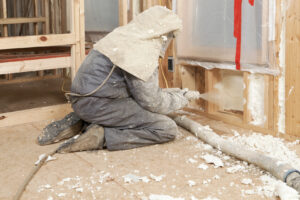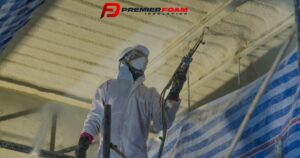Did you know 25% of your home’s heat can escape through an uninsulated attic? That’s a quarter of your heating bill wasted!
But don’t fret, you’re not alone. Many homeowners overlook attic insulation company, but it’s easier than you think.
This guide will break down the process, help you choose the right materials, and show you the simplest techniques to insulate your attic.
You’ll save energy, money, and make your home more comfortable.
Ready to get started?
Understanding Attic Insulation
To understand attic insulation, you’ve got to know its primary purpose: to create a thermal barrier that keeps heat in during winter and out during summer. This barrier is essential for energy savings, as it helps your heating and cooling systems work more efficiently, thus reducing your energy consumption.
Insulation costs can vary widely depending on the type of material used and the size of your attic. However, the upfront cost is often offset by the reduction in energy bills over time. So, when considering insulation costs, it’s essential to consider the long-term energy savings.
Proper insulation can make your home more comfortable and environmentally friendly, making it an investment worth considering.
Also Read: Spray Foam vs. Fiberglass: Which Insulation Solution is the Best?
Assessing Your Current Insulation
Before you can decide on the easiest way to insulate your attic, it’s critical that you assess your current insulation to understand what you’re working with and what needs to be improved.
Start by performing a thorough physical inspection of the insulation material, looking for any signs of damage or wear.
Next, conduct an insulation cost analysis. Consider the age, efficiency, and type of the current insulation and weigh it against potential replacement costs.
You must also keep health considerations in mind. Some types of insulation, such as asbestos, pose serious health risks if disturbed.
Choosing the Right Insulation Material
After assessing your current insulation, it’s time to delve into the process of selecting the right insulation material for your attic.
Two main factors to consider are material costs and health implications.
Fiberglass, cellulose, and spray foam are common choices, each with their own pros and cons.
Fiberglass is generally the cheapest option, but it may cause irritation if not handled properly.
Cellulose offers a mid-range price point and is made from recycled materials, but it can settle over time and lose effectiveness.
Spray foam, while more expensive, provides high energy efficiency and seals tightly. However, improper installation can lead to health implications like respiratory issues.
Also Read: Is Spray Foam in the Attic Worth It?
It’s essential to balance cost and potential health risks when choosing insulation material. A professional Attic Insulation Company can help you better.
Easy Attic Insulation Techniques
You’ll find that the easiest method to insulate your attic is by using a process called ‘blanket insulation’. This technique involves laying fiberglass batting across your attic’s floor, which is a cost-effective insulation solution.
However, it’s important to avoid common DIY insulation pitfalls:
- Under-insulation: An improperly insulated attic can lead to heat loss, increasing your energy bills. To avoid this, ensure you have a sufficient insulation R-value, which measures thermal resistance.
- Ignoring air leaks: Often overlooked, sealing air leaks can significantly improve your insulation’s effectiveness. Use caulk or spray foam to seal any noticeable gaps.
Maintaining Your Attic Insulation
In maintaining your attic insulation, it’s crucial to regularly check for signs of damage or wear. This not only ensures your home remains energy efficient, but also prolongs the insulation lifespan. Look for damp spots, mold, or rodent infestations, as these can significantly degrade your insulation over time.
If your insulation is old or damaged, consider insulation upgrades. These can boost your home’s thermal resistance, reducing your energy bills and providing a more comfortable living environment. Upgrading doesn’t necessarily mean replacing all your insulation. Sometimes, adding a layer over the existing material will suffice.
Conclusion
In conclusion, insulating your attic is crucial for energy efficiency.
Surprisingly, the Department of Energy states that only 20% of homes built before 1980 are properly insulated.
By assessing current insulation, choosing the right material, and applying easy techniques, you can significantly boost your home’s comfort and savings.
Remember, maintenance is key to ensure long-term benefits.
Now you’re geared up to make your home more energy-efficient. For professional assistance call Premier Foam Insulation.





